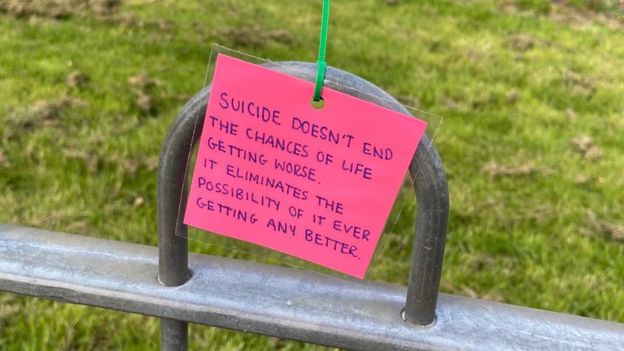 James Donaldson notes: I am turning more and more of my time and efforts towards mental health issues, especially pertaining to our young people and student-athletes.
James Donaldson notes: I am turning more and more of my time and efforts towards mental health issues, especially pertaining to our young people and student-athletes.
Getting men to speak up and reach out for help and assistance is one of my passions. Us men need to not suffer in silence or drown our sorrows in alcohol, hang out at bars and strip joints, or get involved with drug use.
Having gone through a recent bout of depression and suicidal thoughts myself, I realize now, that I can make a huge difference in the lives of so many by sharing my story, and by sharing various resources I come across as I work in this space. http://bit.ly/JamesMentalHealthArticle
Children and teens who experience mental illness are at increased risk for adverse mental health and social outcomes as adults, a study by the Manitoba Centre for Health Policy (MCHP) at the University of Manitoba shows.
Being diagnosed with a mental illness before the age of 18, the study found, increases the likelihood of adverse experiences in adulthood, including suicidal behavior, not graduating from high school, requiring income assistance and being involved with the justice system.
“Other childhood factors, such as income and family structure, explain some of the association between childhood mental illness and adult difficulties, but the risk remained strong even after adjusting for those factors,” said the study’s lead author, Dr. Mariette Chartier, assistant professor of community health sciences at the Max Rady College of Medicine in the Rady Faculty of Health Sciences.
“Our findings indicate that childhood mental illness puts kids at significant risk for ongoing challenges later in life. When a child has an illness such as anxiety, depression or attention-deficit hyperactivity disorder (ADHD), it is likely to cloud their adult life.
“This strongly highlights the need for mental illness prevention and improved mental health services for this age group.”
MCHP conducted the study, “Mental Illness Among Adult Manitobans, for Manitoba Health” to assist it in developing Manitoba’s Mental Health and Addictions Strategy. Chartier’s team used the Manitoba Population Research Data Repository, which is housed at MCHP and allows researchers to trace individuals’ interactions with the health, social service, education, and justice systems without the individuals being personally identified.
The researchers focused on more than 60,000 Manitobans born between 1980/81 and 1984/85. They analyzed the de-identified data about these children as they grew into their 30s. More than 16 percent of individuals in this cohort were diagnosed with a mental disorder during their childhood or teen years.
Two-thirds of individuals diagnosed as children were still living with the same condition as adults. Manitobans who were hospitalized for attempted suicide before age 18 were three times more likely to die by suicide and six times more likely to be re-hospitalized for attempted suicide in adulthood.
The study also took a “snapshot” of adult mental illness in Manitoba from 2010/11 to 2014/15, using a database of virtually all Manitobans. In this five-year period, about 28 percent of adults were diagnosed with at least one of the mental illnesses examined in the study.
The most prevalent illnesses were mood and anxiety disorders (a category that includes depression), diagnosed in 23 percent of adults, and substance use disorders, diagnosed in six percent of adults.
The prevalence of mental illness has remained stable since MCHP’s last five-year report in 2004. The suicide rate is also unchanged since the 2004 report.
“The actual prevalence of mental disorders is undoubtedly higher,” Chartier said. “The figure of 28 percent only represents adults who were diagnosed by doctors or nurse practitioners. We don’t have data for people who seek help from professionals such as psychologists and social workers. We also know that many people with mental disorders never seek treatment.”
In both rural and urban regions, the prevalence of mental illness increased as average neighborhood income decreased. The same was true for the rate of suicide attempts.
Compared to the general population, a higher rate of mental illness was found among adults living in personal care homes, those receiving income assistance, those living in social housing and those involved in the justice system, either as accused or victims. The study wasn’t able to say which came first – the illness or the life circumstances – only that there is an association between being in these groups and mental illness. Rates of suicide and attempted suicide were also higher in these groups.
The study’s recommendations include:
- Increase mental health promotion, mental illness prevention, and suicide prevention efforts
- Strengthen mental health services and improve access to them
- Develop the mental health skills and knowledge of the workforce, in health care and beyond
- Address health inequities
- Support mental health research
- Co-ordinate services among government departments, including health, social services, education, and justice



